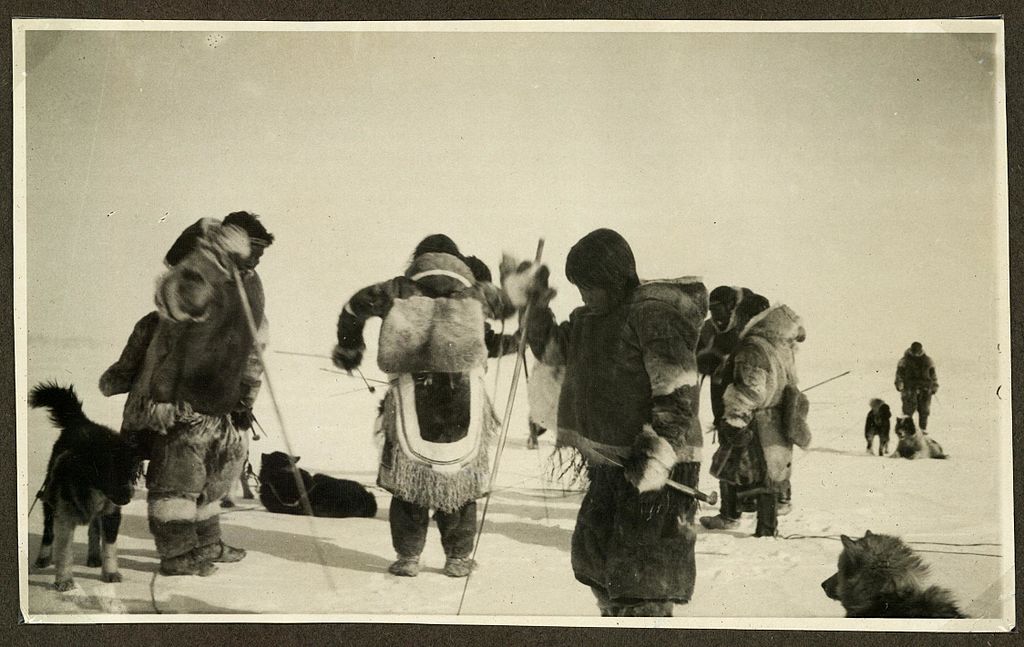As the world becomes more interconnected through globalization, many cultural traditions that once thrived in isolated communities are now fading. These practices, from indigenous crafts to ancient rituals, are struggling to survive as modern influences reshape the way people live and interact. While some efforts have been made to preserve these unique aspects of cultural heritage, the fast pace of urbanization, technological advancement, and global media often leads to the loss of these time-honored customs. This article highlights iconic cultural traditions that are at risk of disappearing, illustrating how globalization impacts their survival.
Traditional Pottery Craftsmanship

The art of traditional pottery, once central to many cultures, is fading fast due to the rise of cheaper, mass-produced alternatives. In regions where pottery has long been a symbol of cultural heritage, such as in Mexico and India, handmade ceramics are being replaced by factory-made goods. Pottery skills that were passed down through generations are no longer being taught, as younger artisans move to urban areas for better economic prospects. The loss of this craft means the disappearance of unique regional designs, patterns, and techniques that cannot be replicated by machines.
Indigenous Weaving Traditions

Indigenous weaving traditions, especially in South America, are under severe threat due to globalization and modernization. Many indigenous communities in countries like Peru and Guatemala have long relied on weaving as a means of cultural expression and livelihood. However, with the influx of cheap, mass-produced textiles from other parts of the world, the market for handcrafted goods has dwindled. Traditional weavers are finding it harder to sustain their craft as younger generations move toward urban jobs that offer more financial security. This shift away from traditional weaving not only erodes the economic foundation of these communities but also threatens to erase the cultural stories and symbols woven into each garment. These textiles often carry significant meaning, including spiritual and historical symbols, that connect the community to its ancestors.
Traditional Japanese Tea Ceremony

The Japanese tea ceremony, known as “chanoyu” or “sado,” is a cultural tradition that has been practiced for centuries but is now in decline due to modern lifestyle changes. The ritual involves a deep appreciation for simplicity, nature, and the act of preparing and drinking tea, typically matcha. As Japan has modernized, the slow, meditative pace of the tea ceremony is increasingly seen as incompatible with busy urban life. Fewer people, especially younger generations, have the time or interest to learn the intricate steps involved in mastering the ceremony. Additionally, Western-style cafes and fast-paced dining options have eroded the cultural prominence of traditional tea houses. The formal clothing, tools, and knowledge required for the ceremony are also becoming harder to come by as demand diminishes.
African Traditional Dance Forms

African traditional dance forms are gradually being displaced by contemporary global dance trends, particularly among the youth in urban areas. These dances, which are deeply tied to community celebrations, spiritual rituals, and storytelling, have been an integral part of African culture for centuries. However, globalization has introduced new music and dance styles that appeal to younger audiences, leading to a loss of interest in traditional forms. The widespread popularity of genres like hip-hop, pop, and electronic music has shifted focus away from indigenous dance. As urbanization continues, many young people migrate to cities, leaving behind rural communities where these traditions are most deeply rooted.
Inuit Hunting Practices

Inuit hunting practices, which have sustained Arctic communities for millennia, are now at risk due to the combined forces of globalization, climate change, and legal restrictions. Traditionally, Inuit hunters relied on skills passed down through generations to hunt seals, whales, and other wildlife essential for their survival. However, global conservation efforts and the imposition of international hunting bans have severely limited their ability to continue these practices. Furthermore, younger Inuit are increasingly moving to urban areas, seeking modern jobs and leaving behind traditional ways of life. The influence of Western culture and consumer goods has also reduced the reliance on hunting for food and materials, as store-bought items replace locally sourced resources.
Maori Tattooing (Tā Moko)

Tā Moko, the traditional Maori tattooing practice from New Zealand, is fading as modern tattoo trends take precedence, especially among younger generations. Tā Moko represents far more than body art; it is a deeply spiritual practice that signifies one’s identity, lineage, and personal achievements. However, global tattooing trends, influenced by Western aesthetics, have led many Maori youth to opt for more fashionable designs over traditional moko. This shift reflects a broader trend where globalized beauty standards influence local cultural practices. The commercialization of Maori symbols for tourism also poses a problem, as non-indigenous people often misappropriate the designs without understanding their significance.
Native American Languages

The number of fluent speakers of Native American languages is rapidly declining, leading to the possible extinction of these languages within the next few generations. Globalization has played a key role in this decline, as English has become the dominant language in the United States, overshadowing the use of indigenous languages. Many Native American communities have shifted toward English for economic and social integration, especially as younger generations attend schools that prioritize English. This trend has resulted in fewer opportunities for children to learn their ancestral languages, leading to a generational gap in language fluency. Furthermore, the spread of mass media, including television, music, and the internet, has reduced the visibility of indigenous languages.
Tibetan Buddhist Monasticism

Tibetan Buddhist monasticism, once a cornerstone of Tibetan culture, is in decline due to the effects of globalization and political pressures. The spread of Western education, technology, and consumer culture has led many young Tibetans to pursue opportunities outside of the monastic lifestyle. In the past, joining a monastery was a respected path, offering spiritual guidance and an education in Buddhist philosophy. However, modern economic demands and the appeal of urban life have made this choice less attractive to the younger generation. Additionally, the Chinese government’s restrictions on religious practices in Tibet have further strained the monastic tradition. Global tourism has also commercialized aspects of Tibetan Buddhism, turning sacred rituals into spectacles for foreign visitors.
Traditional Indigenous Farming Techniques

Traditional indigenous farming techniques, known for their sustainable practices and deep connection to the land, are disappearing as industrial agriculture spreads across the globe. In regions like Central America and Southeast Asia, indigenous farmers have long used methods that preserve biodiversity and maintain soil health. However, global agricultural markets favor large-scale, monoculture farming, which has led many small-scale farmers to abandon their traditional methods. The encroachment of industrial farming not only depletes the land but also erodes the cultural knowledge that has been passed down for generations. Furthermore, the introduction of genetically modified crops and chemical fertilizers has marginalized indigenous techniques, making it harder for these communities to compete in global markets.
Aboriginal Australian Songlines

Aboriginal Australian Songlines are intricate maps of the land and sky, preserved through song and used to navigate the vast Australian outback. As modern infrastructure spreads and digital mapping replaces traditional navigation, the use of Songlines is in steep decline. These songs contain knowledge about sacred sites, waterholes, and migration routes, passed down over millennia. However, the globalization of Australia’s economy and the spread of urbanization have led many Aboriginal communities to abandon these practices in favor of modern conveniences. The disruption of Aboriginal lands by mining and farming also threatens the preservation of these Songlines, as access to sacred sites becomes limited. Global environmental changes, including desertification, are altering the landscape, making some Songlines obsolete.
Sardinian Cantu a Tenore Singing

The Sardinian tradition of “Cantu a Tenore,” a form of polyphonic throat singing, has long been a cultural symbol of the island. Globalization and the influence of modern music have led to a significant decline in its practice, especially among the younger generation. Traditionally performed by small groups of men during communal gatherings, this unique singing style is deeply tied to Sardinia’s rural life. As young Sardinians move to cities and embrace contemporary music genres, fewer people are learning to sing in this traditional manner. The decline of shepherding, a profession closely associated with Cantu a Tenore, has also contributed to its disappearance. Although UNESCO has recognized Cantu a Tenore as part of the world’s intangible cultural heritage, preserving it remains a challenge.
This article originally appeared on Rarest.org.
More from Rarest.org
10 Oldest Castles in the World

Castles are some of the most enduring symbols of history, offering a glimpse into the past through their architecture and stories. These ancient fortresses have witnessed the rise and fall of empires, serving as both military strongholds and royal residences. Read More.
19 Unique Freshwater Fish Thriving in Lakes and Rivers

Freshwater lakes and rivers are home to a fascinating array of unique fish species, each thriving in its own way within these diverse ecosystems. From ancient predators to gentle giants, these fish have adapted to a wide range of environments, showcasing remarkable traits and behaviors. Read More.
10 Oldest Churches in the World

Throughout history, churches have served as spiritual centers and architectural marvels, reflecting the religious, cultural, and historical significance of their time. Some of the oldest ones in the world date back as far as the 1st century AD and offer a glimpse into the origins of Christian worship. Read More.
